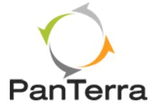Description

PARTH

XenCALL
Comprehensive Overview: PARTH vs XenCALL
PARTH and XenCALL are both software solutions primarily designed for call centers and customer relationship management, each catering to slightly different market needs and offering distinct features.
a) Primary Functions and Target Markets
PARTH:
- Primary Functions: PARTH is generally known for integrating VoIP-based communication with CRM functionalities. This platform supports various call-related activities like inbound and outbound calls, call tracking, recording, and analytics. It also offers integrations with popular CRM and business process tools, facilitating a unified interface for managing customer interactions.
- Target Markets: PARTH targets small to medium-sized businesses (SMBs) that require a comprehensive yet straightforward solution for managing customer interactions. It is suitable for sales teams, customer support departments, and any business that relies heavily on telecommunication to engage with customers.
XenCALL:
- Primary Functions: XenCALL is a cloud-based predictive dialer and CRM solution. It automates the dialing process, thereby increasing agent productivity, and includes features such as lead management, email marketing integration, scripting, and performance analytics. XenCALL is also known for advanced reporting features and customization options.
- Target Markets: XenCALL primarily targets more extensive operations, including large call centers and enterprises with dedicated telemarketing or customer service teams. Its robust dialer and automation features make it suitable for companies looking to optimize high-volume call operations.
b) Market Share and User Base
Quantifying the exact market share and user base for each product can be challenging as it depends on factors like regional presence, specific sectors, and integration ecosystems. However, general observations can be made:
- PARTH: With its focus on SMBs, PARTH typically has a broader base of smaller clients. This market often values cost-effectiveness and ease of use, which PARTH aims to provide. Its simplicity and integration capabilities make it appealing to small businesses looking to enhance operational efficiency without hefty investments.
- XenCALL: XenCALL, catering to larger operations and enterprise clients, might have a smaller but more consolidated user base compared to PARTH. Its appeal lies in its robust predictive dialer functionality and comprehensive CRM capabilities, suitable for companies handling larger volumes of calls.
c) Key Differentiating Factors
-
Functionality and Complexity:
- PARTH offers a more straightforward, user-friendly approach, suitable for clients who need essential telecommunication features integrated with their existing business tools.
- XenCALL provides a sophisticated platform with predictive dialing and advanced analytics, appealing to clients who require more advanced capabilities.
-
Target Audience:
- PARTH is tailored for SMBs and startups looking for a cost-effective, easy-to-implement solution.
- XenCALL targets larger companies and call centers that require more robust and specialized tools to manage high call volumes efficiently.
-
Integration and Customization:
- Both platforms offer integration with third-party applications, but XenCALL allows more extensive customization, catering to enterprises with specific workflow needs.
-
Pricing Structure:
- PARTH generally offers competitive pricing with tiered plans suitable for smaller budgets.
- XenCALL may have a higher price point, justified by its enhanced features and scalability for larger operations.
In summary, while both PARTH and XenCALL serve the telecommunications and CRM integration market, they differentiate themselves through their target audience focus, feature sets, and pricing strategies, each addressing specific needs within the broader call center and customer relationship management landscape.
Contact Info

Year founded :
2017
Not Available
Not Available
India
Not Available

Year founded :
2014
+1 800-694-1049
Not Available
Canada
Not Available
Feature Similarity Breakdown: PARTH, XenCALL
To provide a feature similarity breakdown for PARTH and XenCALL, let's go through each requested category:
a) Core Features in Common
-
Cloud-Based Dialing Systems: Both PARTH and XenCALL likely offer comprehensive cloud-based dialing systems that include automatic and predictive dialing capabilities to increase outbound calling efficiency.
-
CRM Integration: They both integrate with Customer Relationship Management (CRM) systems to provide a seamless flow of information between the calling software and customer data management tools.
-
Call Recording and Monitoring: Both platforms are expected to offer call recording functionality, allowing calls to be saved for compliance, training, or quality assurance purposes. They may also offer call monitoring features for managerial oversight.
-
Reporting and Analytics: Detailed reporting and analytics features are likely present in both platforms, enabling users to track performance metrics, call outcomes, and agent productivity to make informed business decisions.
-
VoIP and Softphone Capabilities: Both may support Voice over Internet Protocol (VoIP) and offer softphone capabilities, allowing calls to be made directly from computers without the need for traditional phone systems.
b) User Interface Comparison
-
Simplicity and Navigation: PARTH's interface might be designed to be user-friendly with a focus on simplicity and ease of use, likely catering to a broad user base that includes those who may not be highly tech-savvy. XenCALL's interface could be similar, emphasizing easy navigation but potentially with a more data-centric approach that gives quick access to analytics and performance metrics.
-
Customization: XenCALL might offer more customization options for users to tailor dashboards and views according to their specific workflow needs, while PARTH could focus on maintaining a streamlined experience with fewer customization options to ensure consistency and reliability.
-
Visual Appeal: Both platforms likely strive for a modern and visually appealing UI, though their approaches may differ slightly. PARTH might opt for a cleaner design, whereas XenCALL might incorporate more detailed visual elements in its reporting interfaces.
c) Unique Features
PARTH Unique Features
-
Industry-Specific Solutions: PARTH may offer specialized solutions tailored to specific industries, providing features that cater to unique business requirements that aren't widely available in more generalized platforms.
-
Proprietary Integrations: It might have some proprietary integrations or partnerships that add value to its offering, potentially enhancing functionality beyond standard CRM or data integrations.
XenCALL Unique Features
-
Advanced AI and Predictive Analytics: XenCALL could feature more advanced AI-driven analytics and machine learning algorithms to predict customer behaviors and optimize call strategies.
-
Enhanced Agent Support Tools: Tools such as real-time coaching, sentiment analysis, or more robust lead scoring systems may set XenCALL apart by offering advanced support to agents during active calls.
In the absence of direct access to both products' latest and complete feature sets, these insights are speculative and based on general tendencies observed in similar software solutions. For the most accurate and detailed comparison, consulting official product documentation or sales representatives is recommended.
Features

Security
Customizations
Collaboration Tools
User Management
Data Analytics

Call Management
Contact Management
Analytics and Reporting
Integrations
Best Fit Use Cases: PARTH, XenCALL
PARTH and XenCALL are both platforms that cater to different business needs, particularly in the realm of customer relationship management (CRM) and call center operations. Here’s a breakdown of their best fit use cases:
PARTH
a) Best Choice for Types of Businesses or Projects:
- Small to Medium Enterprises (SMEs): PARTH is often an excellent choice for SMEs looking for cost-effective solutions to manage their customer interactions and streamline communication processes.
- Industries with Complex Customer Interactions: Businesses in sectors such as healthcare, real estate, or any industry with lengthy customer service processes may find PARTH helpful due to its customizable workflows and automation capabilities.
- Project-Based Firms: Companies that manage multiple projects simultaneously, like consulting or construction firms, might benefit from PARTH’s project management integration.
- Tech-Savvy Teams: Organizations with teams that are comfortable with technology might prefer PARTH for its digital-focused solutions and integrations with other tools.
XenCALL
b) Preferred Scenarios:
- High-Volume Sales Centers: XenCALL is particularly well-suited for businesses with extensive outbound calling needs, such as telesales and telemarketing operations, due to its advanced dialer capabilities.
- Remote or Distributed Teams: Companies with remote teams can leverage XenCALL’s cloud-based platform for easy access to call data and management features from anywhere.
- Real-Time Analytics Needs: XenCALL provides in-depth real-time analytics and tracking features that are beneficial for call centers needing to monitor and optimize agent performance continuously.
- Companies Seeking All-In-One Solutions: For businesses that need a unified platform for CRM and call center functionalities, XenCALL offers integration capabilities and features that bring these functions together.
Industry Verticals and Company Sizes
d) Catering to Different Industry Verticals or Company Sizes:
-
PARTH:
- Verticals: Highly adaptable to industries like healthcare, real estate, legal services, and construction due to its focus on custom workflows and automation.
- Company Sizes: Primarily targets SMEs due to its affordability and flexibility in scaling solutions to match company growth.
-
XenCALL:
- Verticals: Ideal for sectors with a significant focus on outbound sales and customer contact operations, such as financial services, insurance, and telecommunications.
- Company Sizes: Although scalable for various company sizes, it is particularly beneficial for small to mid-sized call centers due to its robust set of dialer features and analytics tools.
In summary, PARTH and XenCALL cater to different business needs, with PARTH being more flexible for smaller companies needing project management and workflow automation, while XenCALL targets businesses focused on high-volume sales and contact center operations, offering detailed analytics and cloud capabilities.
Pricing

Pricing Not Available

Pricing Not Available
Metrics History
Metrics History
Comparing undefined across companies
Conclusion & Final Verdict: PARTH vs XenCALL
To provide a comprehensive conclusion and final verdict for PARTH and XenCALL, let's examine each product based on several criteria, including features, cost, user experience, integration capabilities, and support. Keep in mind that individual needs may vary, so the best choice often depends on specific user requirements.
a) Best Overall Value
Considering all factors, the best overall value between PARTH and XenCALL largely depends on the specific needs of the user. However, if we have to determine a general winner:
- XenCALL may offer better overall value for call centers or sales teams focused on automating and optimizing their outbound communications. It offers integrated CRM capabilities, predictive dialer technology, and robust reporting features.
- PARTH might provide better value for organizations looking for customization and a platform that can be tailored to specific business processes. It could be more suitable for companies that require a more flexible system that adapts to unique workflows.
b) Pros and Cons of Each Product
XenCALL:
-
Pros:
- Seamless CRM integration and data management.
- Advanced dialing capabilities with predictive dialers.
- Strong reporting and analytics features.
- Good for scaling sales operations.
- User-friendly interface and reliable customer support.
-
Cons:
- May be expensive for smaller businesses.
- Could require training for new users.
- Might offer more features than necessary for some users, causing complexity.
PARTH:
-
Pros:
- Highly customizable to fit specific business needs.
- May offer competitive pricing for tailored solutions.
- Potential for integration with a wide variety of tools and applications.
- Focus on agility and flexibility in deployment.
-
Cons:
- May not come with as many built-in features or integrations as XenCALL.
- Customization process can be time-consuming.
- Depends heavily on the quality of the development team for custom solutions.
c) Specific Recommendations
For users trying to decide between PARTH and XenCALL, consider the following:
-
Assess Business Size and Needs: Small to medium-sized businesses with straightforward needs may prefer XenCALL for its comprehensive features and ease of use. Larger enterprises or those needing significant customization should consider PARTH.
-
Budget Considerations: Evaluate the total cost of ownership, including any setup, customization, or training expenses. XenCALL could be more cost-effective if you need an out-of-the-box solution with minimal modifications.
-
Focus on Core Features: Determine which core features are non-negotiable for your organization. For example, if predictive dialing is crucial, XenCALL is the better fit. If customization and flexibility are more critical, PARTH might be the way to go.
-
Trial and Evaluation: Whenever possible, take advantage of demos or trials for both platforms. This hands-on experience can provide deeper insights into how each system aligns with your processes and user preferences.
In conclusion, both PARTH and XenCALL have strengths that cater to different organizational needs. The decision should come down to specific business requirements, budget constraints, and the importance of customization versus ready-to-use features.
Add to compare
Add similar companies



